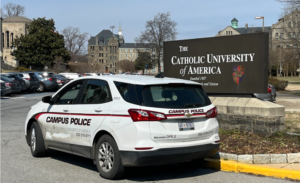Panic & Panic: What’s Going on With the Johnson & Johnson Vaccine?

Image Courtesy of Forbes
By Jack Rowing
Pharmaceutical company Johnson &Johnson’s release of a vaccine was met with thunderous applause as it provided the one-shot vaccine. Neither Pfizer nor Moderna had been able to produce a single shot dosage for the Covid vaccine.
However, two weeks later, the European Union opened up an investigation into the vaccine’s effects on reported blood clots due to complications with the vaccine. There were approximately 9 cases of reported blood clots.
On April 13, the CDC recommended the pause of the vaccine so as to investigate the cause of the blood clots. While it is unknown what component in the vaccine that causes the blood clots, both the CDC and the EU have determined the extremely limited risk associated with the vaccine, and that the benefits of possessing the vaccine drastically outweigh the risks.
With this in mind, public discussion around the Johnson & Johnson vaccine has drawn criticism from all manner of people in politics worrying about the problem of vaccine hesitancy.
Vaccine hesitancy refers to when individuals are nervous or don’t believe in the efficacy of the vaccine. In the United Kingdom, former prime minister Tony Blair called vaccine hesitancy “wrong” and “unjustified,” as its effects could lead to the continuation of the Covid-19 pandemic.
Statistician and founder of 538 Nate Silver has been tweeting about the link between CDC and public health officials’ response and the pause of the Johnson & Johnson vaccine.
“The polling data suggests it’s now going to be harder to convince those people to get vaccinated, but I’ve also started to encounter IRL examples of people saying stuff like ‘I heard there’s something wrong with the J&J vaccine,’” Silver said in a tweet.
According to YouGov, roughly 52% of people believed that the vaccine was safe to take, and only 26% of people believed that it was unsafe. After the announcement from the CDC the number of people who think that vaccines are safe, dropped to around 37% and the number of people who disagree rose to 39%.
“The further we go into the vaccination process, the more passionate the hesitancy is,” said political consultant Frank Luntz.
There have been multiple different narratives that include religion, class, and party affiliation that are designed to understand who might be hesitant to get the vaccine. The Johnson & Johnson pause has caused the most damage of any single factor. There were about seven million people who received the Johnson &Johnson vaccine and only nine of them experienced complications in the form of blood clots. This represents less than a ten-thousandth of a percent chance that someone receiving the vaccine could get blood clots. For reference, this is ten thousand times larger than the chance you have of dying crossing the road.






